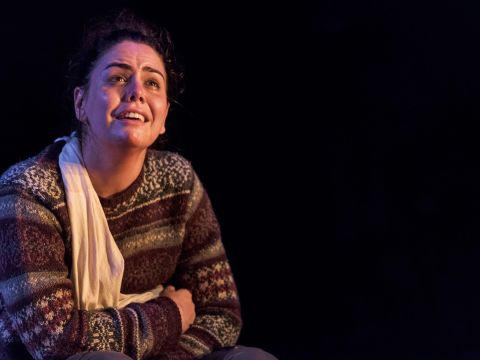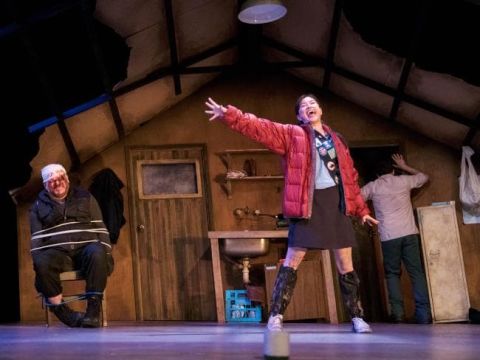Our History
The Dead Devils of Cockle Creek
10 Feb – 3 Mar 2018
Venue
The Roundhouse
Producer
La Boite and Playlab
Director
Ian Lawson
Dramaturg - Ian Lawson
Playwright
Kathryn Marquet
Cast
John Batchelor
Julian Curtis
Emily Weir
Kimie Tsukakoshi
Costume Designer
Vilma Mattila
Set Designer
Vilma Mattila
Lighting Designer
Christine Felmingham
Lighting Mentor - David Walters
Sound Designer
Wil Hughes

Image by Dylan Evans
Dead Devils of Cockle Creek hits the mark
Review by Martin Buzacott in The Australian , February 16, 2018
Kathryn Marquet’s The Dead Devils of Cockle Creek is a backwoods tall tale in the grand tradition of John Millington Synge, Sam Shepard and Louis Nowra.
Set in the Tasmanian wilderness but informed by the ravings of a post-truth White House, Marquet’s impressive sophomore play centres on greenie-zoologist George Templeton (Emily Weir) whose merciless fanaticism in the cause of saving Tassie devils has turned homicidal.
Her pot-smoking ranger-friend Harris Robb (Julian Curtis) tries to help the unholy do-gooder clean up the mess but, in a classic Playboy of the Western World-style theatrical moment, the man she shot, Mickey O’Toole (John Batchelor), suddenly comes back to life — and from there on in it’s showtime, folks.
Batchelor’s physically imposing, hilarious but more often downright scary portrayal of the violent Irishman is an awesome stage realisation of a brilliantly written character.
Oscillating constantly from politeness and concern for others, to disconcertingly sentimental recollections of a violent childhood, then on to threats of Tarantino-esque uber-retribution on those who have just shot him, Batchelor’s first La Boite appearance in 20 years has the audience with him the whole way.
And that’s why the denouement, after a tightly packed 100 minutes, still comes as a shock. He’s so likeable that it’s all too easy to forget that even such a charming and amusing criminal is still at heart not the kind of guy you cross.
The girl guide Destinee Lee (Kimie Tsukakoshi), who stumbles in, lost in the wilderness, after her friends have clearly had a gutful of her flat-earth fundamentalism and dumped her, is similarly well-drawn. She may be Pauline Hanson’s greatest admirer, but when the chips are down she, too, reverts to type, a frightened schoolgirl missing her mum. But she’s the future.
Director Ian Lawson may want to work with the actors’ diction in the first 10 minutes, as too many key lines are missed, but he and designer Vilma Mattila, with lighting designer Christine Felmingham, capture the miles-from-anywhere feel of the location perfectly.
Ultimately it’s a play about the issues of our time — climate change, species loss and the corrupting power of the market — but it’s also about ideology’s capacity to dehumanise.
There are few things more satisfying in theatre than seeing a young playwright emerging toward maturity, and this sophisticated and assured ripping yarn filled with the blarney represents a creative leap forward from Marquet’s debut play, Pale Blue Dot, staged at the same venue nearly four years ago.
#Gallery
#Have any photos to share?
We'd love to see your photos of this show and publish them in our archive.
#Tell us your story
Do you remember this show or were involved in its production?




















